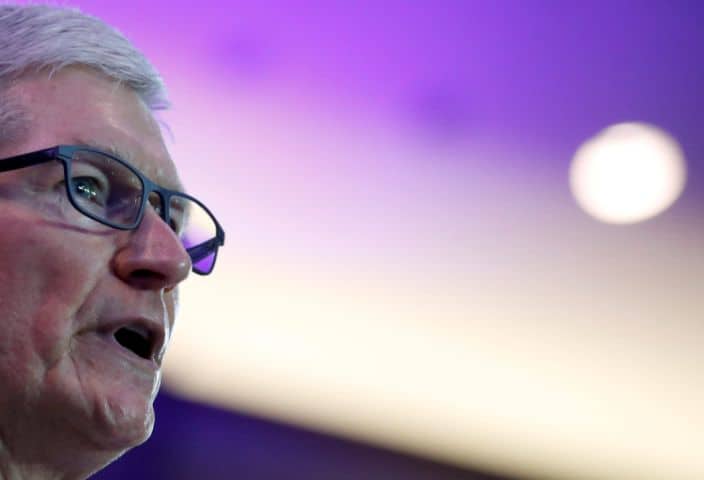
Apple’s first major new product since the Apple Watch will be an expensive headset designed to set the stage for augmented reality glasses, according to a report from Bloomberg’s Mark Gurman.
The headset is expected to be released as soon as 2022 and will go head-to-head with other devices like Facebook’s Oculus and Sony’s PlayStation VR, sources familiar with the matter told Gurman.
Apple has been exploring VR and AR devices and software in recent years. In 2020, the company added LiDAR sensors to the iPhone 12 Pro, which made the smartphone more adept at performing augmented-reality tasks.
The VR headset will set the stage for a thinner, sleeker pair of smart glasses that could replace the iPhone in about a decade, The Information reported last year.
Apple’s initial headset release will operate primarily as a virtual-reality device, displaying an “all-encompassing 3-D digital environment” for users to do anything from game to watch videos or simply chat, according to the report. Gurman says the first headset’s augmented-reality capabilities will likely be “more limited” as the company continues to develop the technology.
The headset will reportedly be battery operated much like Facebook’s Oculus Quest and will not require a gaming console like PlayStation’s PSVR headset, though Apple’s product is expected to be much more expensive than its competitors which below $1,000.
Apple’s first headset will likely not be a product for the masses for some time
According to Gurman, some sources say the company may sell only one of the devices daily at each of its retail locations. If that’s the case, the product would firmly be on the niche end of Apple’s product lineup, closer to the unit sales of high-end devices like the Mac Pro, which starts at $6,000.
The VR headset would be a gamble on Apple’s part into a fairly new and undeveloped technology that has yet to gain meaningful traction with mainstream consumers.
The company’s main focus in developing the headset seems to be as a prototype, leading up to an eventual pair of AR glasses – a device that would be much more mainstream, Gurman reports.
The headset faces several hurdles before it can be released
Hardware companies in the VR and AR space often talk about eventual versions of their product that will more closely resemble traditional glasses, but such a device with compelling AR and VR features is a complex undertaking that utilizes bleeding-edge tech. So far, no company has pulled it off.
There’s also the question of whether enough people will actually buy such a device. Google’s Glass product was launched in 2013 and failed just two years later. But while wearable technology for the face can be a tough sell, Facebook has begun to see promising signs with the Oculus Quest 2.
Another key part of convincing people to buy such a device is the content that runs on it. Companies like Facebook and Valve have spent many millions funding the development of VR experiences.
Apple has been known to take on similarly ambitious products that have either flopped or never reached the market, including Ping an attempt to turn iTunes into a social network, the AirPower charging mat, and Apple’s Pippin gaming console.
But Apple CEO Tim Cook is bullish on augmented-reality, and appears to be pushing Apple into new categories in recent years.
In addition to new Apple Watch models, leaning into the services business, and launching high-end Apple headphones, Apple has also reportedly been working on a self-driving electric car since 2015. The project, codenamed “Project Titan,” has faced delays, and is not expected to be released for at least five years.
Outside of entering a new frontier with technology that is still evolving, the headset also faces several hurdles before it’s ready for launch, according to Gurman. Components used in the headset reportedly include powerful chips along with high-resolution displays, as well as a fan to cool the headset down. These additions have led the headset to become heavy enough to warrant concerns of possible neck strains, according to the report.
An Apple spokesperson did not immediately respond to a request for comment.